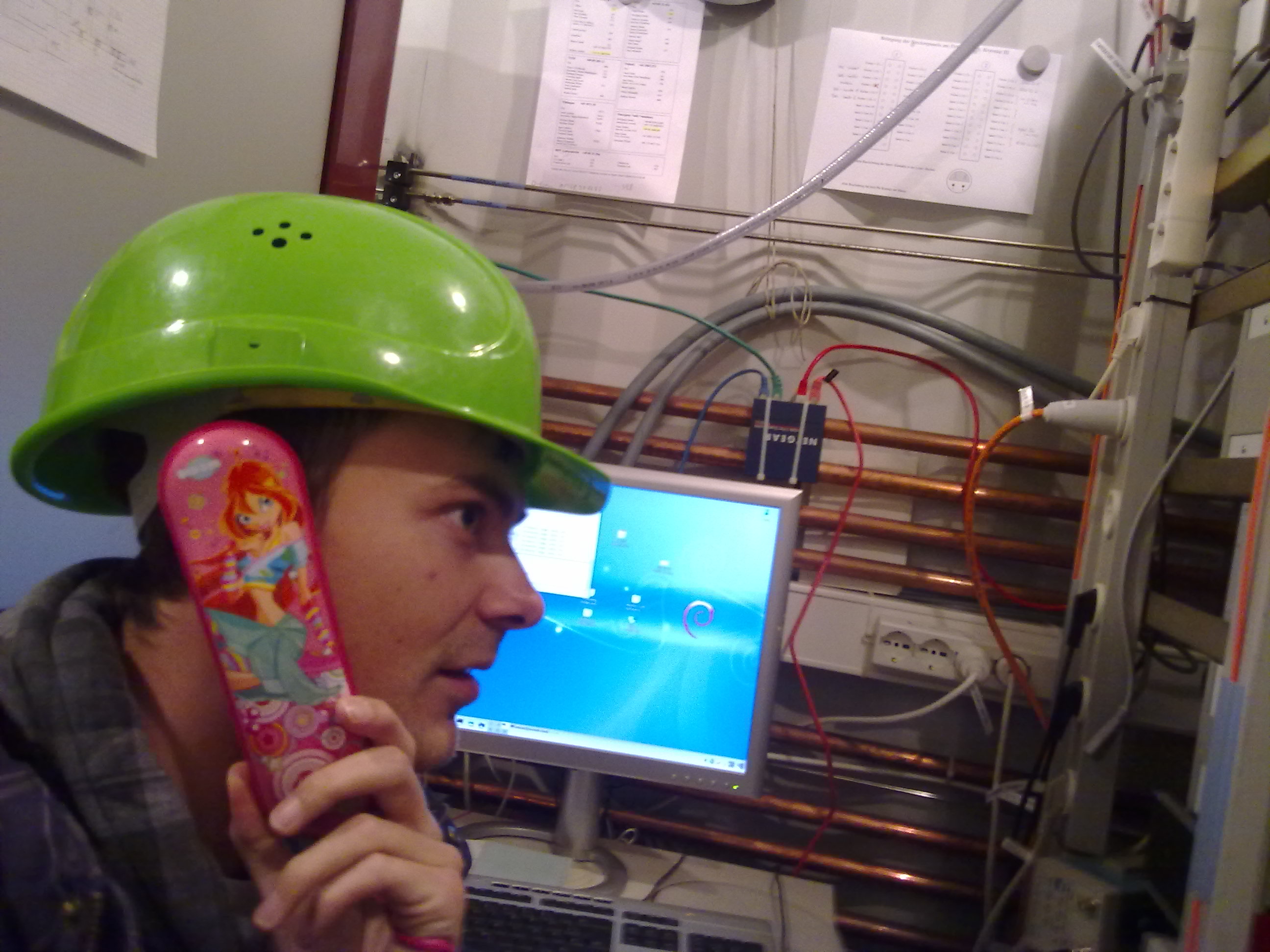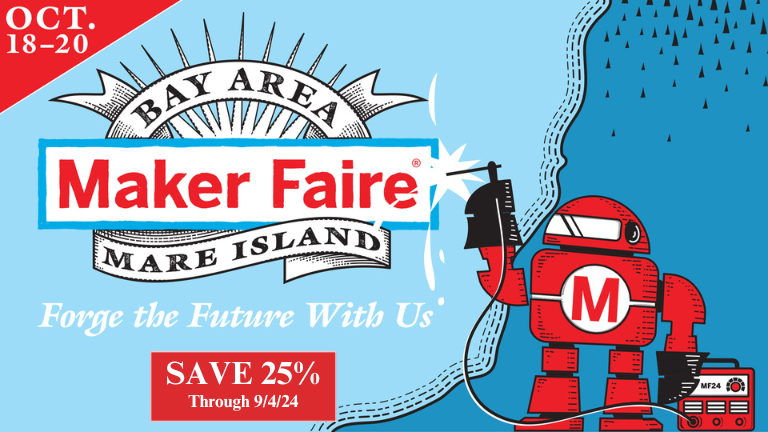Servo Wordclock v2
By Moritz von Sivers
In this variation of the popular word clock, letters are projected from the back onto a screen, each letter is connected to a linear actuator that can be moved back and forth by a servo so that the projection changes size and focus.
Type: Artistic

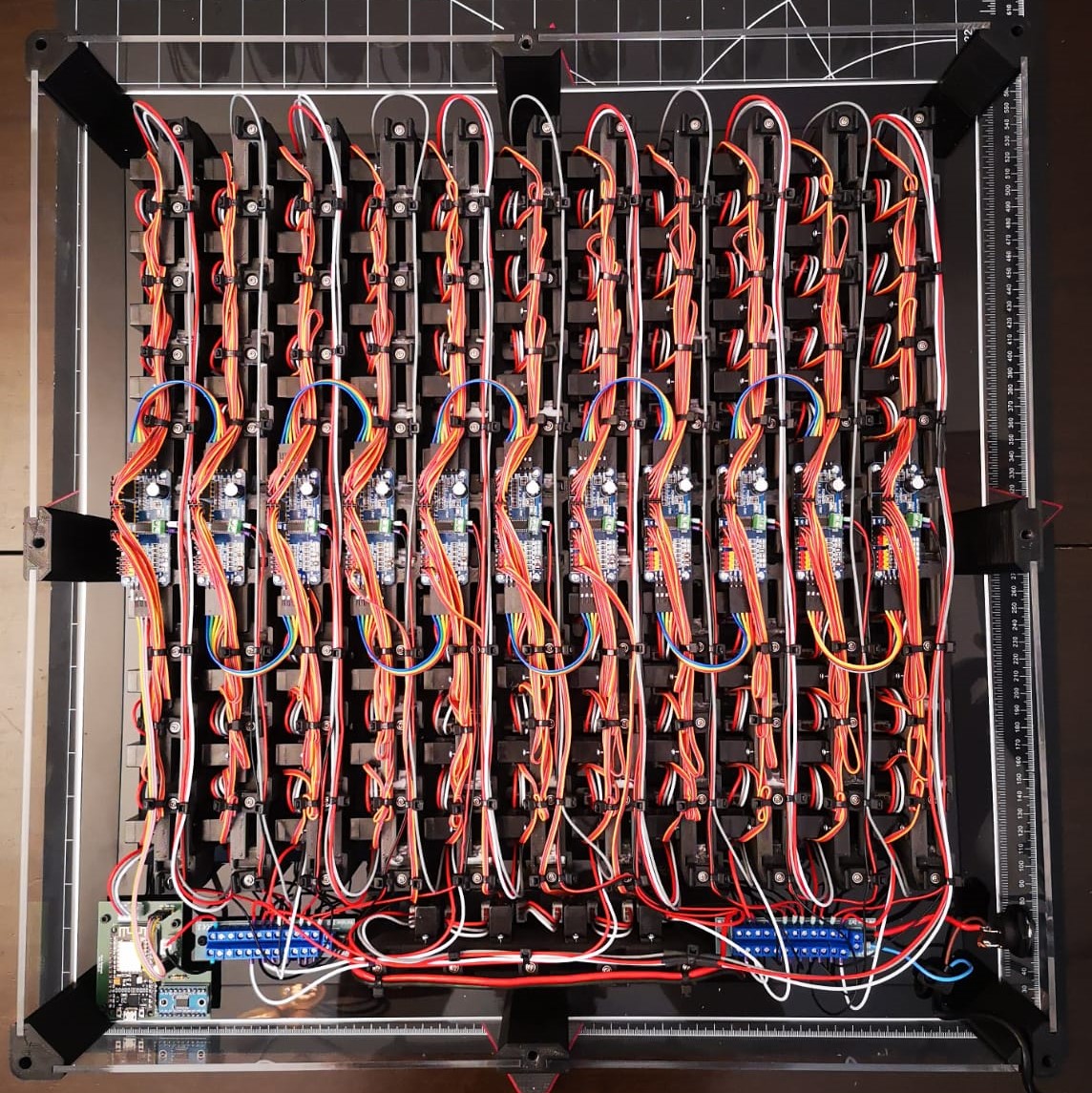

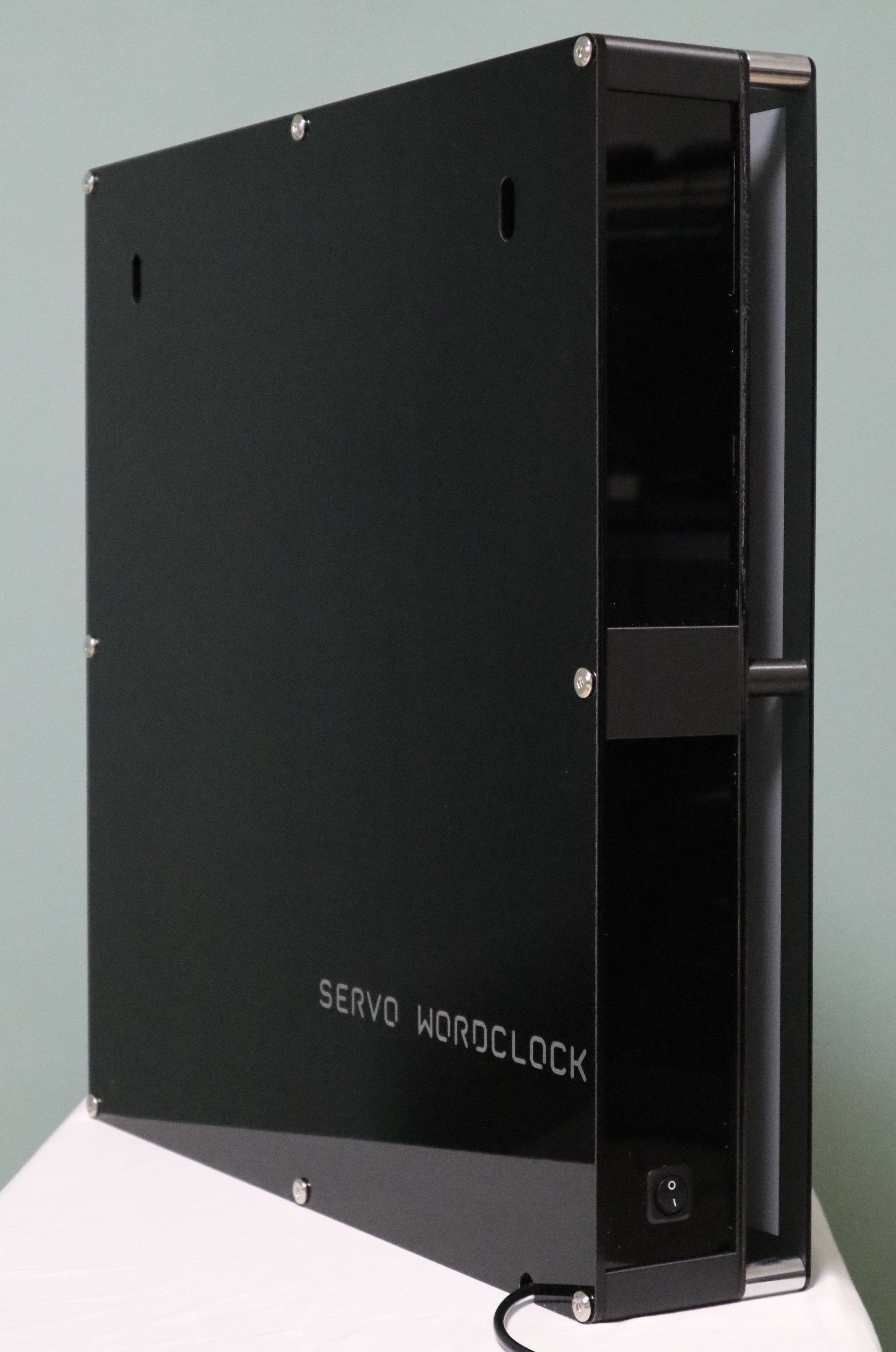
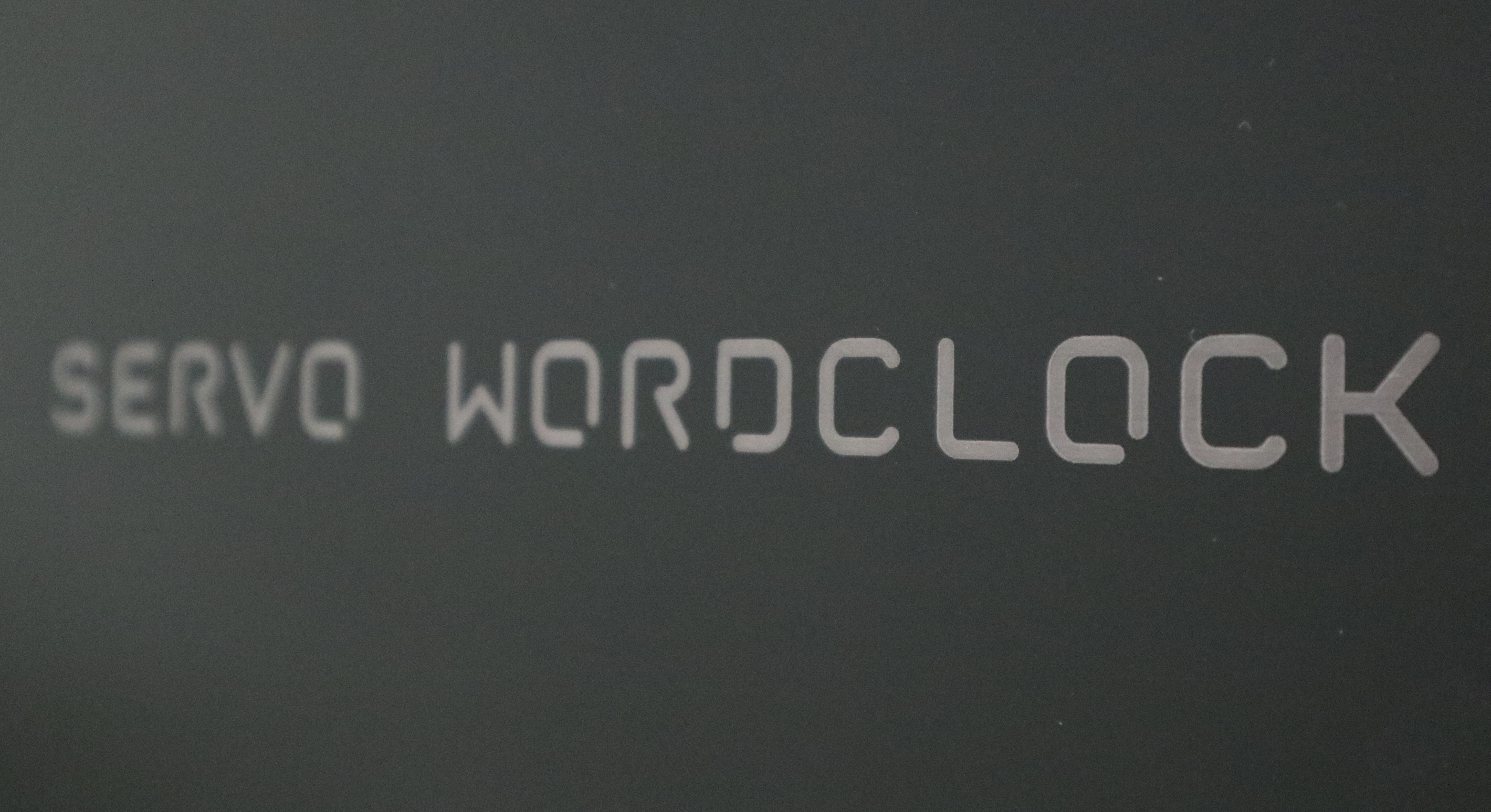

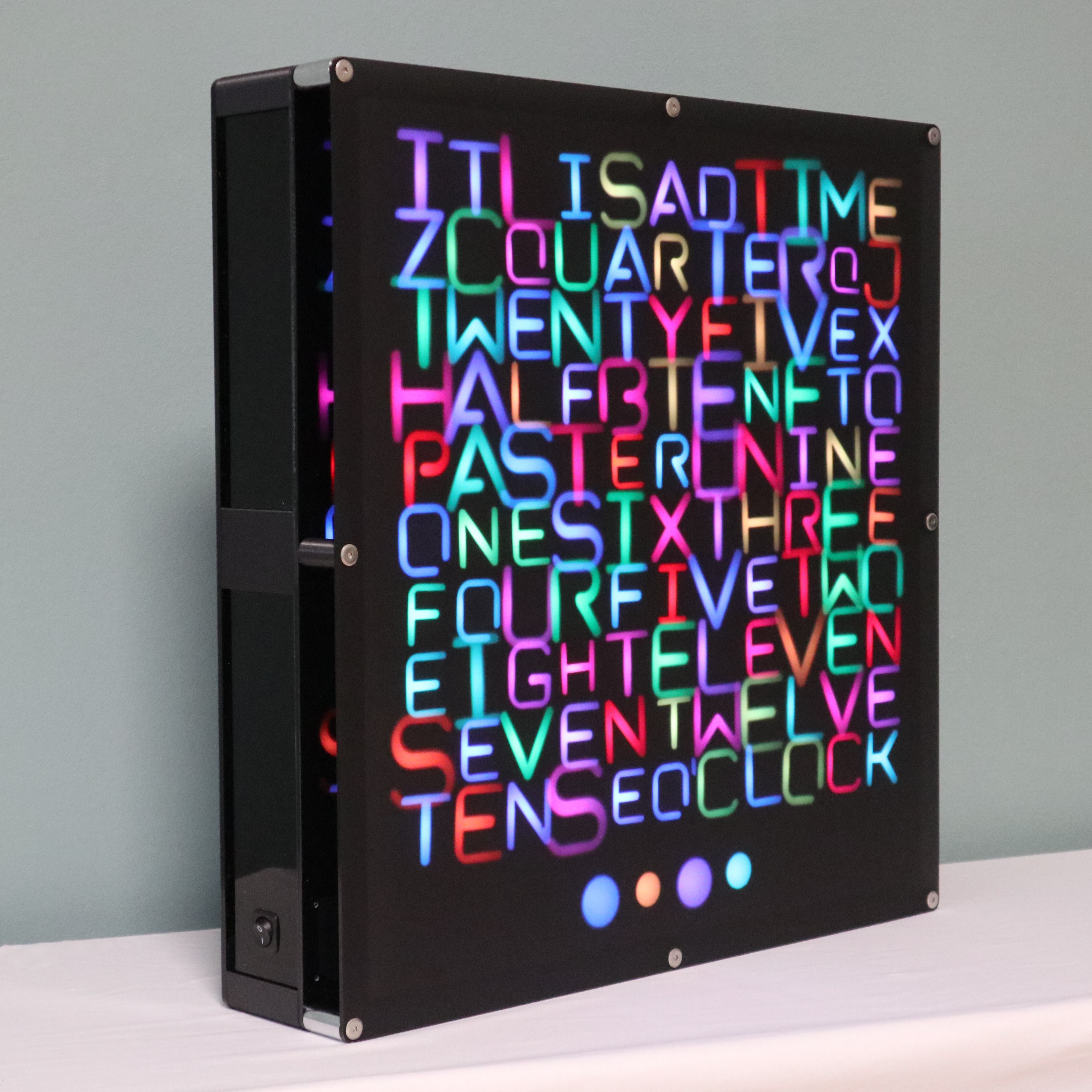

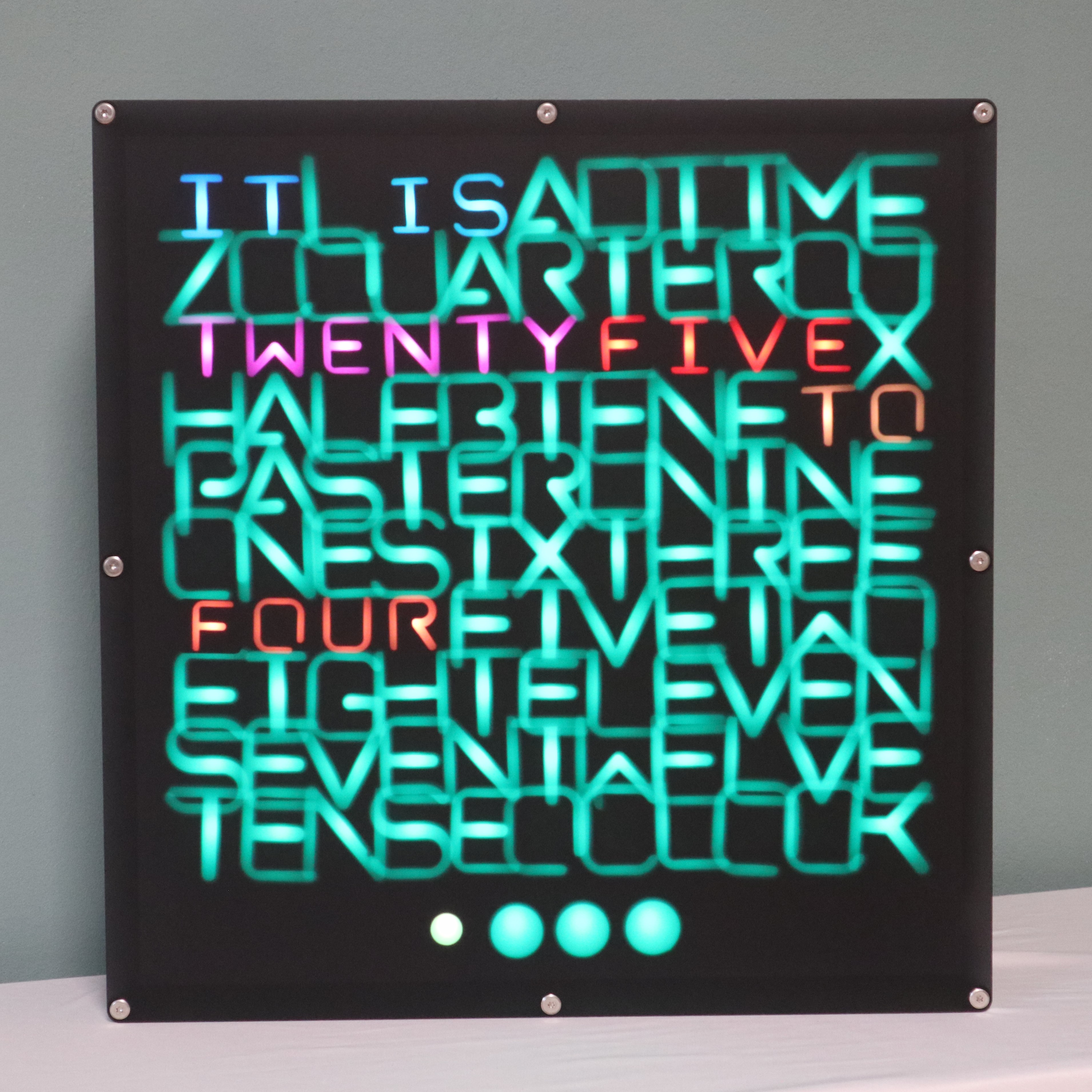
What inspired you or what is the idea that got you started?
3 years ago we finished building a word clock controlled by 114 servos. Since we got a lot of positive feedback for our clock we started to work on an improved version. Version 1 of the clock looked great but the building process was very tedious and would make it almost impossible for other people to recreate. In this project, we did a complete redesign of the clock with the goal to make it more reliable and to greatly ease the assembly process.
What is your project about and how does it work?
The Servo Wordclock consists of a matrix of 114 letters which are projected from the back onto a semi-transparent white screen. As the name says each letter can be moved back and forth behind the screen using a micro servo motor thereby changing the size of the projected image. The time is displayed by slowly fading each letter into focus and simultaneously changing its color.
The clock is controlled by an ESP8266 which runs a webserver. The clock can be connected to your WiFi or run its own access point. All clock functions can be controlled via a graphical user interface from a web browser.
What did you learn by doing this project?
While creating this project we greatly improved our skills in the following topics
- 3D printing
- PCB design
- CAD design
- laser cutting
- Arduino programming
- web app programming in javascript
Since at the beginning we also pursued the idea to turn this into a product we also learned a lot about the hurdles involved like
- product certification (CE, FCC, WEEE)
- warranty issues
- founding a company
What impact does your project have on others as well as yourself?
The Servo Wordclock is a piece of technological art that was created to tell the time in a visually pleasing way.
It was very motivating to get positive feedback from other people impressed by the design but could also be frustrating at times because of the huge amount of time that went into planning, designing, and building this project. In the end, we became kind of disillusioned when we realized the hurdles of turning such a complex project into a product are just too big.


